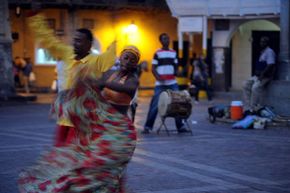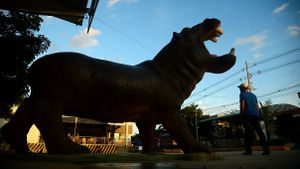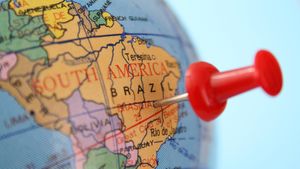Traditional Colombian Music and Dance
If Colombia's traditional costumes reflect a blend of the country's Amerindian, Spanish, Caribbean and African influences, the nation's music is even more of a mixed bag. Colombia's Andean region is home to more than 100 indigenous groups whose native music, used in rituals for healing and magic, has influenced many of Colombia's traditional styles of music and dance. On the opposite side of the spectrum, cumbia, a style of music and dance that is widely heralded as a national tradition, originated as a courtship dance meant to mimic Colombia's Spanish colonizers [source: Mauleon]. Below are just a few of the many delightful styles of regional Colombian music and dance:
- Andean music and dance: One of the predominant styles of music in the Andean region is bambuco, which sounds a little like Spanish guitar music but can incorporate rhythmic elements rooted in the currulao music of Colombia's Pacific coast [source: Varney]. Bambuco is also performed as a couples' dance, which is something like a sensual waltz with moments of brief, delicate contact. The bambuco style of music is celebrated from June 22 to July 2 every year during the Bambuco National Folk Festival [source: ProExport].
- Colombian Atlantic music and dance: Cumbia, which is probably Colombia's most well-known and most popular traditional music style, originated during the Spanish colonial period. African drums and Indian flutes dominate the sound [source: Mauleon]. Cumbia is so celebrated in Colombia that a monument to this style of music and dance has been erected in the town of El Banco.
- Colombian Pacific Music and Dance: Heavily influenced by the music of Africa, currulao is played with folk instruments such as the marimba de chonta, the guasá (a hollow cylinder filled with light seeds) and the cununo drum. A lead singer voices the main melody and an answering choir responds [source: Jaramillo]. As with bambuco and cumbia, currulao is a style of dance, as well as a style of music.
Other flavors of traditional Colombian music and dance include porro and vallenato (from Colombia’s Atlantic coast) and joropo from the Orinoquía region (llanos) of Colombia’s interior.
Advertisement
If Colombian music and dance got your toes tapping in this section, Colombian food will make your taste buds tingle in the next.












